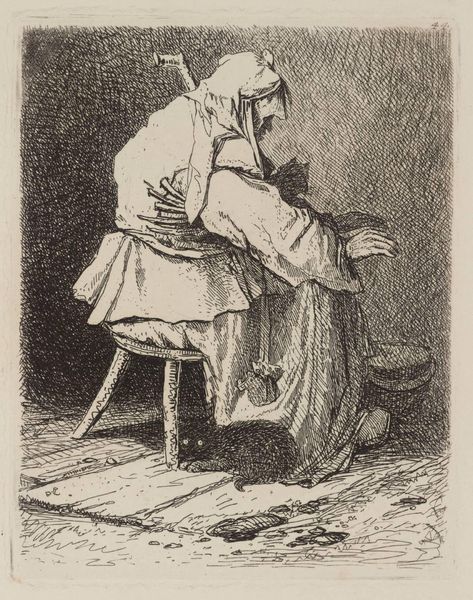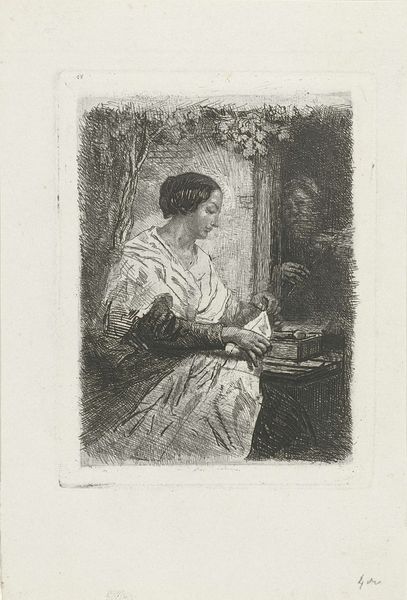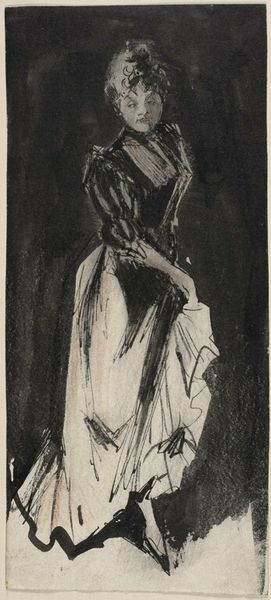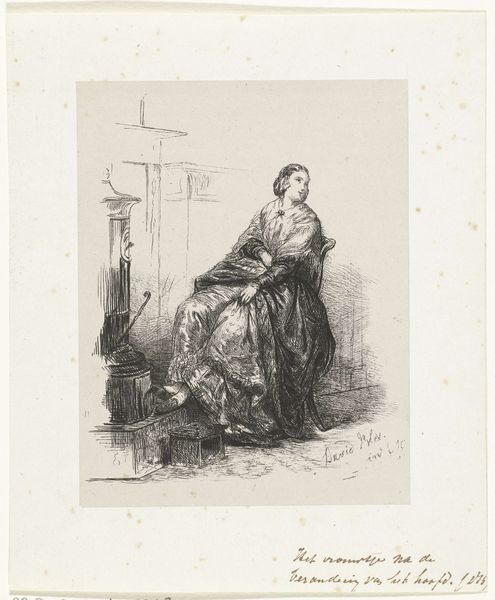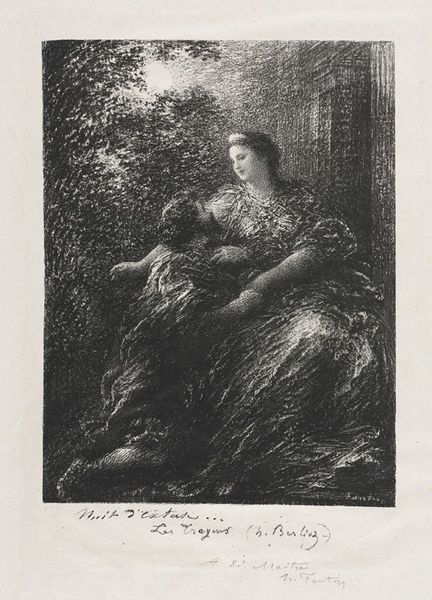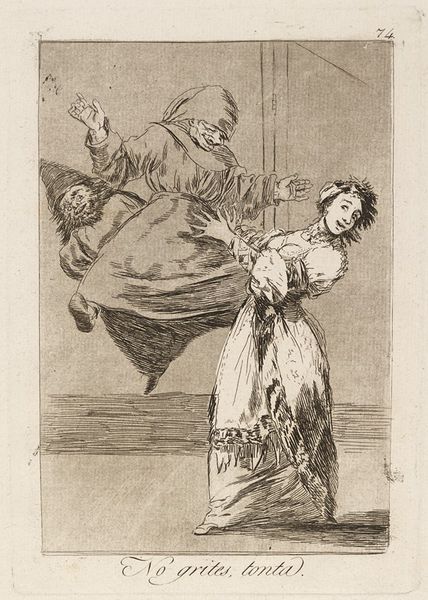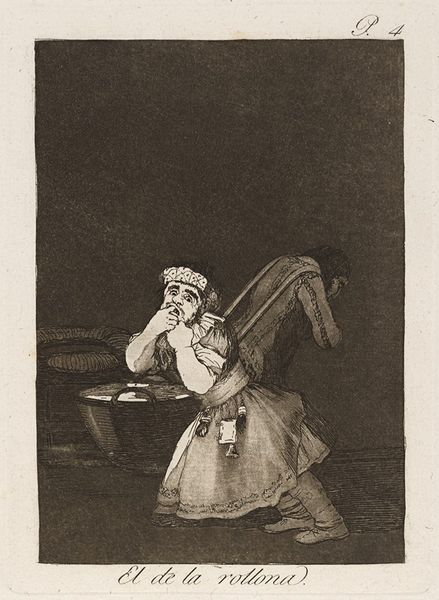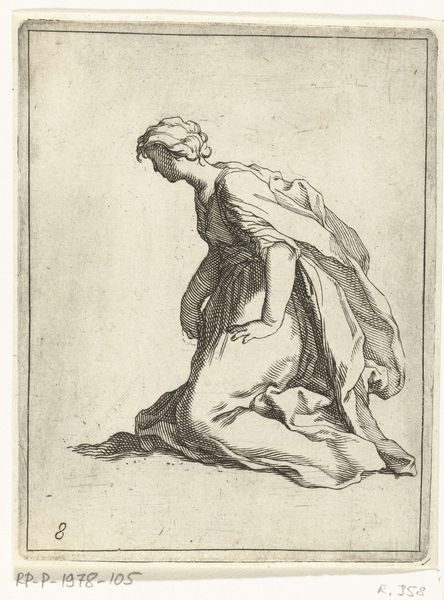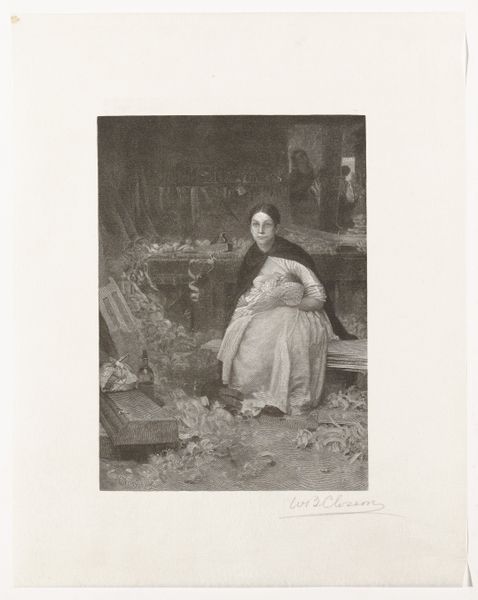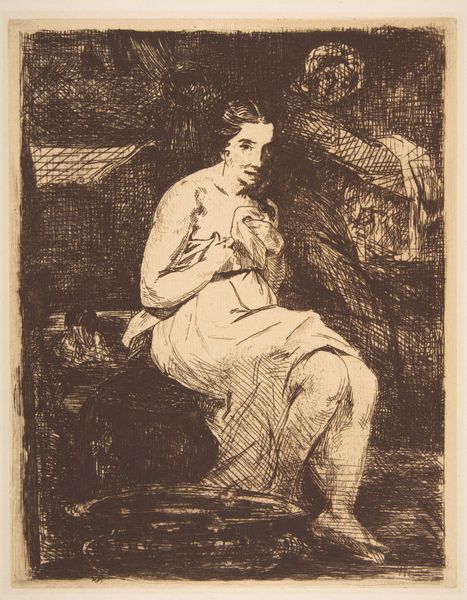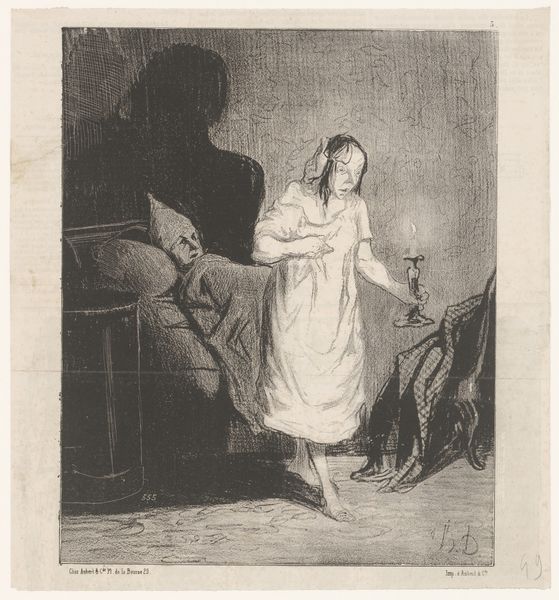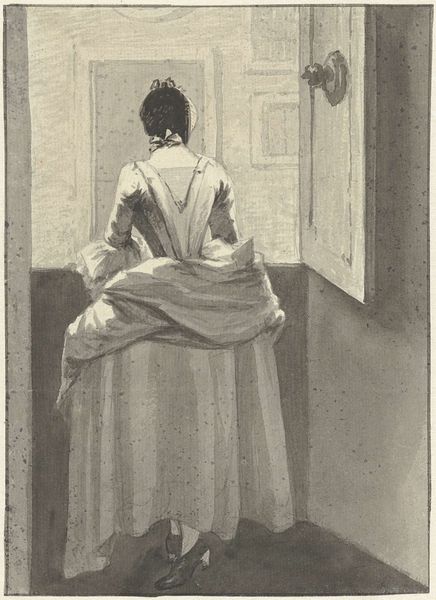
print, etching
#
portrait
# print
#
etching
#
figuration
#
romanticism
Copyright: Public Domain: Artvee
Francisco Goya made this etching titled 'Por que fue sensible' - 'Because she was sensitive' - in Spain, sometime between 1810 and 1820. The image shows a lone woman, seated in what appears to be a prison cell. The image presents a stark commentary on the social realities of Goya's time, especially the vulnerable position of women. 'Por que fue sensible' is part of a larger series called 'The Disasters of War'. Although the series focuses on the horrors of conflict, this print suggests a broader critique of societal injustices. Perhaps it reflects the oppressive social structures and political turmoil in post-Napoleonic Spain. The title implies that the woman's sensitivity, her capacity for feeling, has led to her imprisonment. To fully understand Goya's work, we delve into the history of 19th-century Spain, examining legal documents, social commentaries, and the history of gender. It's through this multi-layered approach that we appreciate the power of art as a reflection on and challenge to social norms.
Comments
No comments
Be the first to comment and join the conversation on the ultimate creative platform.
